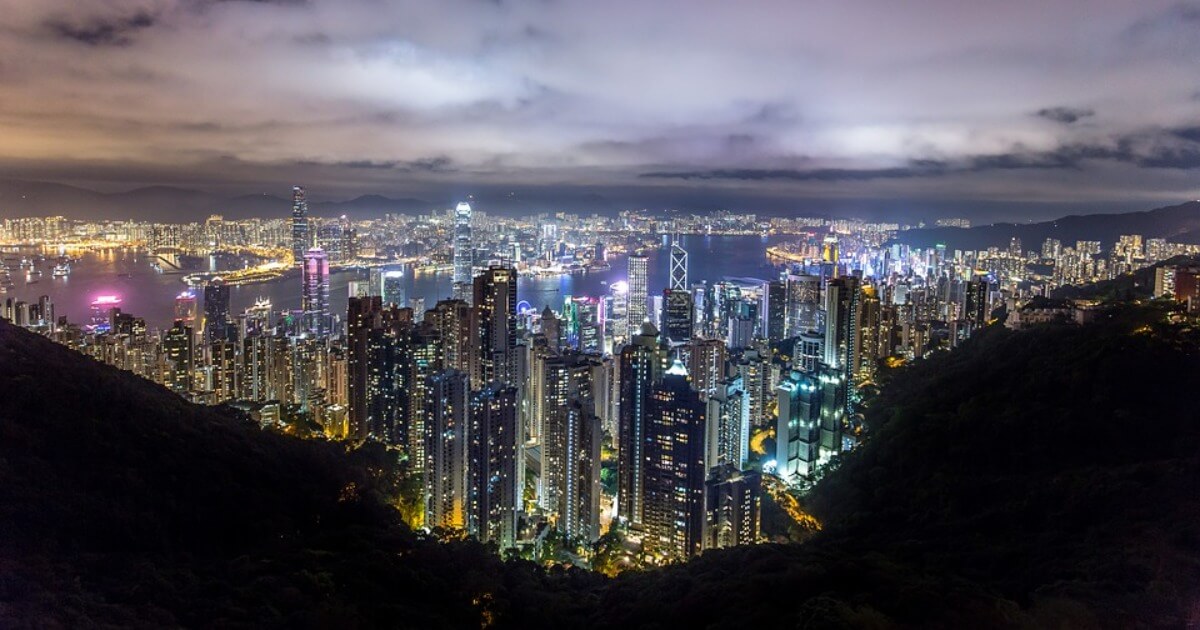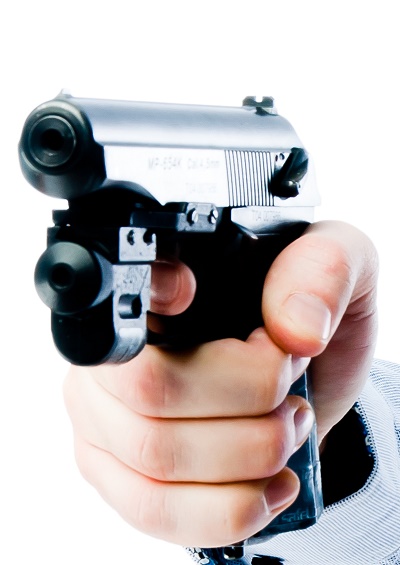Hong Kong and Beijing: A Tale of Two Cities
The current protests show that Hong Kongers aren’t just interested in money, and mainland elites worry that Hong Kong won’t remain a separate territory where they can safely store their money.
May 28, 2020

Editor’s note: We are re-running this feature from the fall of 2019 to indicate our sadness at what’s transpiring in Hong Kong. China’s controversial Hong Kong security law will surely further stoke the flames of protesters’ anger.
There was a strange half-symmetry between the two cities on October 1, 2019. A parade in Beijing combined Soviet-style rocket display, Pyongyang-style massed soldiery and Mussolini-style rhetoric, as Xi Jinping gave a salute from an open-topped car.
In Hong Kong that same day, massive ranks of heavily armored police marched through streets behind barrages of tear gas and rubber bullets, beating their shields in unison.
Meanwhile, the local leader, chief executive Carrie Lam, was in Beijing for the anniversary festivities. Hence, the only voice of authority that was on site was the police.
The Hong Kong police
Since mass demonstrations began in Hong Kong in June, in the absence of initiatives to resolve what is a political issue, the police have been the voice which counts most. Needless to say, this has aroused greater antagonism on the part of demonstrators.
From the very beginning, they have accused the police of unwarranted violence. The apparent aim of the police has not so much been to protect people and property from any demonstrator violence, but to drive the demonstrators from the streets.
To that end, the police has increasingly declared protests to be unauthorized and thus illegal. This stands in sharp contrast to the right of assembly and peaceful demonstration supposedly being protected by the Basic Law, Hong Kong’s mini-constitution.
Democratic pride vs. authoritarian rule
It was not unexpected that October 1 would be a difficult day. After all, it symbolizes the clash between Beijing’s view of itself and the place of Hong Kong within China.
It grates on the Chinese leadership that the people of Hong Kong are anxious to maintain their own sense of identity against the centralizing, nationalistic regime of Mr. Xi.
The day in Beijing ended with fireworks. The day in Hong Kong ended with the police having fired an almost incredible 1,400 canisters of tear gas, plus firing 1,300 rounds of rubber bullets and similar projectiles as well as one live round.
The latter nearly killed a young demonstrator. An Indonesian pressman lost an eye to a tear gas canister even while wearing eye protection. There were 269 arrests, including 91 women.
Pitched battles in Hong Kong
The scale of turmoil which occurred in several parts of the territory showed the determination of the demonstrators as well as the willingness of some masked and helmeted front-line activists to resort to pitched battles.
They used poles and Molotov cocktails against police equipped with body armour, masks, shields, pepper spray.
The net result is that the Hong Kong police, with the backing of pro-Beijing politicians, are demanding yet more powers and draconian laws to deal with the situation.
For its part, the non-violent mass of pro-democracy supporters is outraged by police excesses which make it likely that confrontation of some sort or another will continue.
Grievances against the police
Court cases against those arrested will provide ample opportunity for focus on grievances against the police.
Its indiscriminate actions have incited widespread anger among a large part of the population who were not involved in the demonstrations. Hong Kong’s youth has been alienated.
None of this should come as a total surprise. It has been building for five years. In previous times, the Hong Kong government tended to back down in the face of widespread opposition to moves seen as seriously endangering Hong Kong’s autonomy.
In 2003, it withdrew a bill on National Security legislation, and in 2012 a plan to impose a National and Moral education curriculum in schools.
Frustrating the people of Hong Kong
But since mid-2014, all Hong Kong’s efforts to develop its democratic system and protect its liberal traditions have been frustrated.
First, Beijing’s National People’s Congress made a ruling effectively blocking democratic development which should have been within its own right to determine. That led to the weeks-long Umbrella movement which saw central part of the city partly paralysed by protests.
Although that wave of protests eventually subsided and seemed to leave little obvious mark, legislative elections in 2016 saw a big swing against the government and especially towards young advocates of autonomy.
But once again, the voters were quickly frustrated by Beijing-backed legal moves to oust them from their seats.
The government then also began actions against the Umbrella movement organizers, with some of its leaders sentenced for the legally nonsensical offense of “incitement to incite to cause a public nuisance.”
As recently as June, barrister and legislator Tanya Chan was sentenced to eight months for this offence, though it was suspended on medical grounds.
Neither side gives an inch
The Hong Kong government’s continuous manipulation of laws to cripple elected persons and use administrative powers to prevent others from running for election caused further alienation.
Thus, when the government, quite unnecessarily, came forward with legislation to allow extradition to the mainland, there was instant opposition. This time, it notably included the normally quiescent business community.
Mass opposition to the bill soon morphed into wider demands, including a judicial inquiry into police brutality.
As the radicals now see things, suspension and eventual withdrawal of the bill did not follow million strong peaceful marches. It was only when they trashed some symbols of government that it responded.
The government is digging in
Despite nearly four months of turmoil, no one has resigned from government, no proposals have been put forward which would even begin to address the issues.
Ms. Lam’s government of civil servants and business elite interests lacks both the imagination and will to take any initiatives, whether or not approved by Beijing.
She herself has become almost invisible, in marked contrast to the police chiefs seeking ever greater power and Beijing leaning on companies to sack pro-democracy employees.
Global eyes matter!
However, both the Hong Kong government and Beijing are wary of foreign response. This is due to the need to maintain Hong Kong’s separate economic status as well as its role as a link to overseas Chinese.
In addition, the PRC leadership is greatly concerned that, for all of its charm offensives in the region, the views on China on the part of its Asian neighbours have been becoming steadily more negative.
Conclusion
Whatever happens next, as a result of the current wave of protests, two illusions are gone: First, the foreign one that Hong Kong people are only interested in money.
Second, the mainland one that Hong Kong would remain a separate territory where they could safely store their money. It is perhaps the even more intriguing one.
Takeaways
It was not unexpected that October 1 would be a difficult day. It symbolizes the clash between Beijing’s view of itself and the place of Hong Kong within China.
October 1 in Beijing ended with fireworks. The day in Hong Kong ended with the police having fired an almost incredible 1,400 canisters of tear gas.
It annoys the Chinese leadership that Hong Kong wants to maintain its own sense of identity against the centralizing, nationalistic regime of Mr. Xi.
Ms. Lam’s government of civil servants and business elite interests lacks both the imagination and will to take any initiatives, whether or not approved by Beijing.
The Hong Kong government and Beijing are wary of foreign response because of the need to maintain Hong Kong’s separate economic status and as a link to overseas Chinese.
